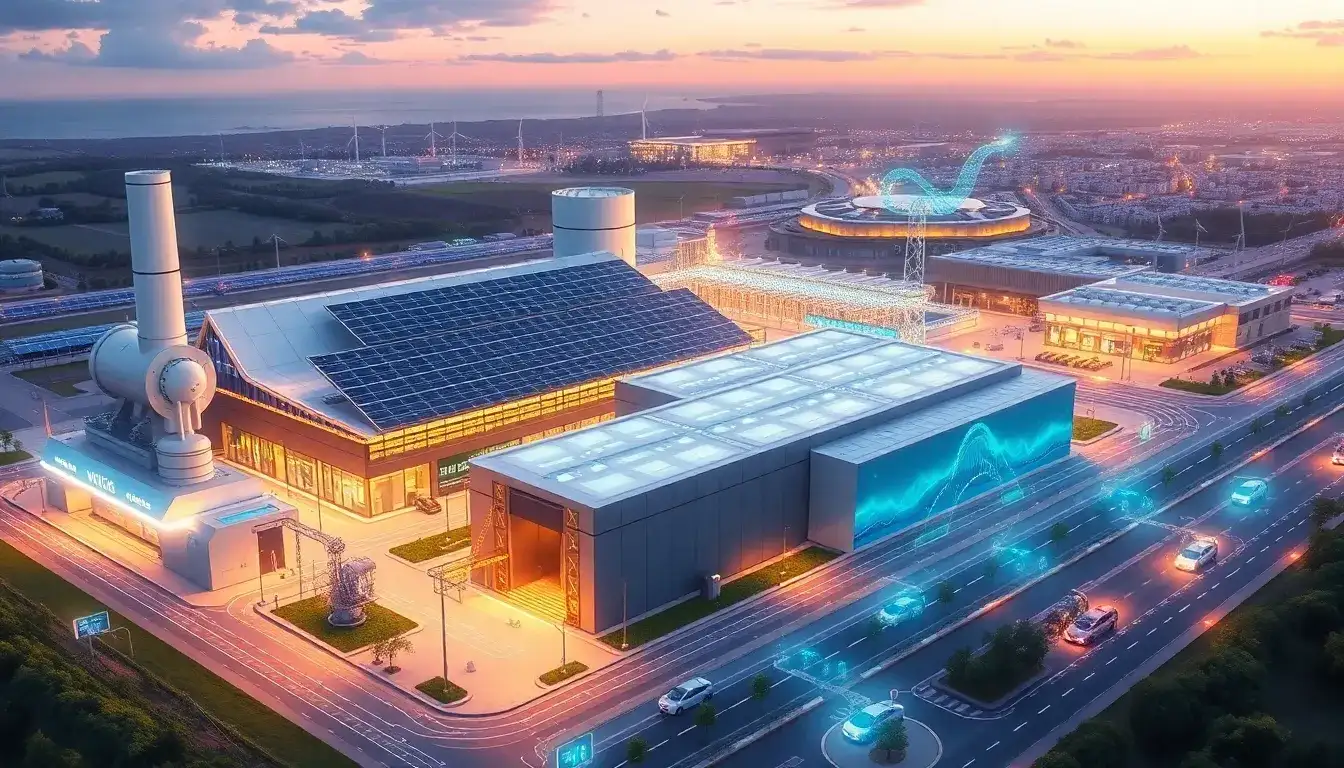Using Energy Storage to Bridge Gaps in Gas-Electric Coordination
Energy storage presents a powerful solution for synchronizing gas and electric systems, enhancing grid flexibility and reliability.
For decades, effective coordination between gas and electric systems has been a key priority in ensuring the reliability of the bulk electric grid. The urgency of this coordination has only increased in the aftermath of Winter Storm Elliott, which highlighted the need for new strategies to address long-standing challenges. The National Association of Regulatory Utility Commissioners (NARUC) has initiated efforts through its Gas-Electric Analytical and Reliability Standards initiative, underscoring the necessity for innovative solutions. Fortunately, energy storage is emerging as a vital tool within U.S. wholesale markets, offering increased reliability and affordability during extreme weather events.
The Challenge of Gas-Electric Coordination
Gas-electric coordination is a unique and complex issue. The natural gas system relies on real-time balancing, with pipelines managing supply and demand while ensuring safe pressure levels. In cold weather, natural gas must flow smoothly to meet heating demands for homes and businesses while simultaneously supplying power plants that support the electric grid. However, limited pipeline capacity creates competition between these two needs.
This competition is exacerbated by the differing operational structures of the gas and energy markets. The gas market relies on long-term contracts for pipeline capacity, granting rights to utilize the infrastructure. In contrast, the bulk electric system operates on a just-in-time basis, managed by regional grid operators to match electricity generation with real-time demand. Power generators typically submit bids for day-ahead and real-time markets, rather than engaging in long-term contracts. A recent study by the Northeast Power Coordinating Council revealed that most gas-fired generators in the region lack firm transportation entitlements, meaning that gas intended for electricity generation will often be curtailed before gas used for heating.
The interdependence between natural gas pipelines and the electric grid adds further complexity. Compressor stations, which maintain pipeline pressure, often rely on electricity to function. If electricity generation is predominantly sourced from gas-fired plants and gas supply is disrupted, these stations cannot operate, hindering gas delivery to generators. This creates a feedback loop where the loss of electricity restricts gas supply, which in turn limits electricity production. Any disruption in one system can rapidly affect the other, potentially leading to outages and reliability issues for both gas and electric systems.
The Role of Energy Storage
Energy storage serves as a powerful solution for aligning gas and electric systems, providing flexibility and reliability that neither can achieve alone. The Northeast Power Coordinating Council study noted that while dual-fuel capabilities supported by liquid fuel storage can enhance electric system reliability, they have notable limitations, especially during extended periods of extreme cold. Energy storage directly addresses these challenges by storing and dispatching energy without dependence on limited fuel supplies.
Energy storage enhances grid resilience and mitigates supply interruptions in several ways:
- Improving Operational Flexibility: Natural gas plants, while generally reliable, have limitations in their responsiveness. They require time to adjust output, making them less adaptable to rapid demand changes. In contrast, energy storage can respond within seconds, filling this gap effectively.
- Optimizing Gas Resource Use: Energy storage can strategically utilize stored energy from gas generation during times when gas is scarce or costly, such as during cold snaps. This shift not only improves reliability but also helps reduce costs for consumers.
-
Accelerating Deployment to Meet Urgent Needs: Constructing new gas pipelines is a lengthy and costly endeavor, often taking years due to regulatory hurdles. While some regions may still require additional pipeline capacity, energy storage offers a quicker, scalable solution to enhance grid reliability in the short term. Storage projects can be deployed more rapidly through streamlined interconnection agreements and permitting processes.
Learning from Recent Cold Snaps
The effectiveness of energy storage in improving gas-electric coordination has been demonstrated during recent extreme weather events. For instance, during Winter Storm Elliott, data from the Electric Reliability Council of Texas showed how energy storage functioned as a crucial bridge, helping maintain grid balance and preventing widespread outages. Similar outcomes have been observed in California, where energy storage has played a vital role in managing grid reliability during heat waves, paralleling the challenges faced by gas-electric systems in colder regions.
Looking Ahead
As the energy landscape continues to evolve, integrating energy storage into gas-electric coordination efforts is essential. Regulators and grid operators must prioritize policies that encourage storage deployment, simplify interconnection processes, and ensure that storage resources are compensated for their reliability contributions. While natural gas will remain a critical component of the energy system for years to come, incorporating energy storage can provide a new level of flexibility and resilience. By leveraging storage to synchronize gas and electric systems, we can effectively address the challenges posed by extreme weather, shield consumers from fluctuating energy costs, and ensure a more reliable grid for the future.
Original article by NenPower, If reposted, please credit the source: https://nenpower.com/blog/enhancing-gas-electric-coordination-through-energy-storage-solutions/



